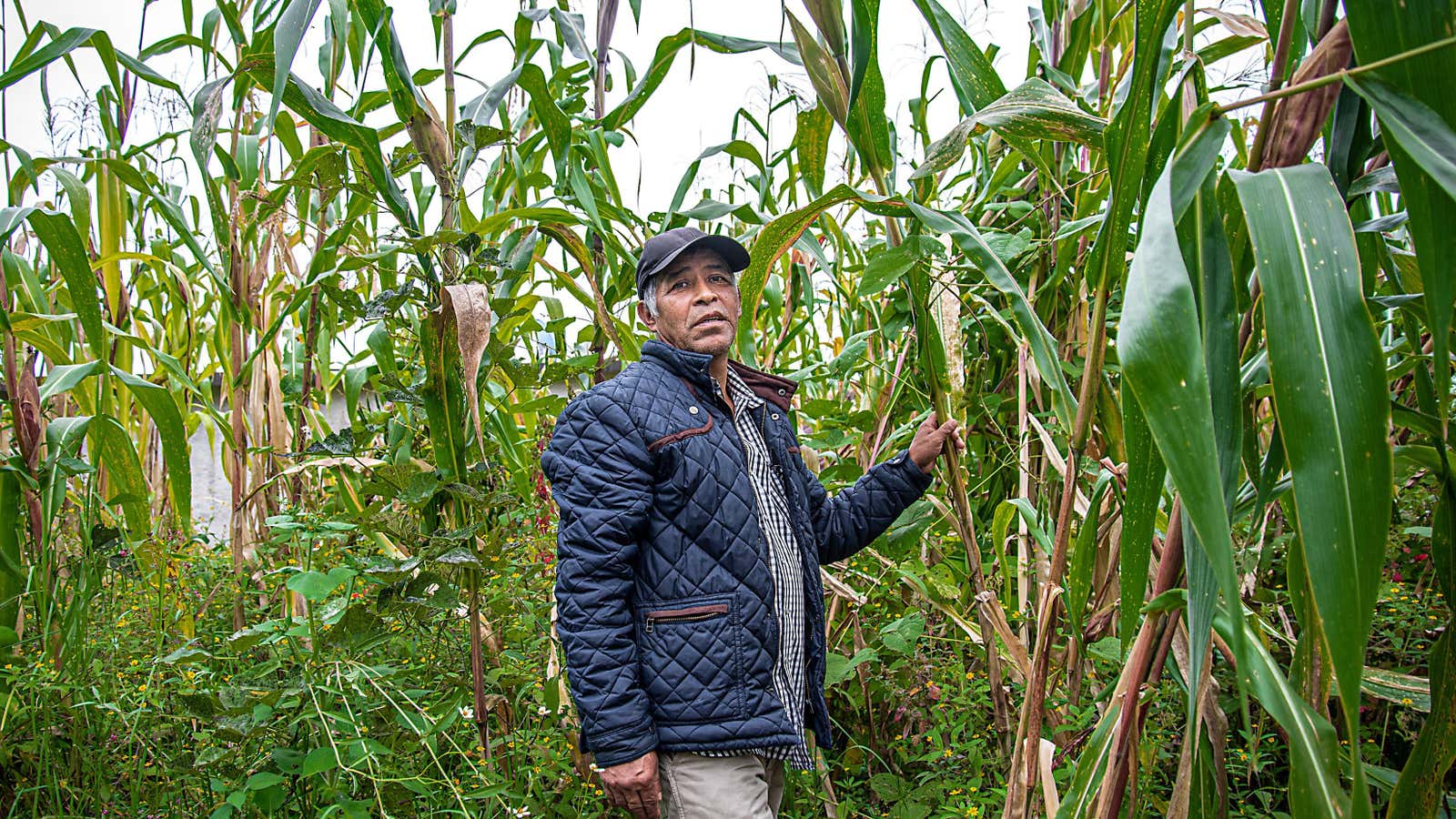Talk with farmers in Mexico and they will tell you they’re already feeling the brunt of climate change.
Persistent heat and meager rainfall are drying out the land, posing a significant challenge to indigenous small farmer in southern states like Oaxaca, Chiapas, and Quintana Roo. Complicating matters, these farmers, called “campesinos,” often lack access to irrigation, either because they don’t live near lakes, rivers, or other sources of fresh water, or because they can’t afford to build irrigation systems.
This isn’t just a problem for Mexico. These growers are the custodians of rare varieties of maize that may hold the secret to more sustainable agriculture. If they lay down their tools, their crops could begin to vanish.
“The last four years, harvests have been very bad,” said Aldo Gonzalez Rojas, a spokesperson for the Union of Organizations of the Sierra Juarez of Oaxaca, a collection of indigenous Zapotec farmers that is helping campesinos cope with drought, building irrigation systems where possible.

“The rainy season begins later and is much shorter than it used to be,” he said. “The rains don’t start until September. A campesino cannot wait till September to start planting, because the cold in December will kill his maize.”
Campesinos typically grow native varieties of maize, beans, squash, and chili peppers, primarily to feed their own extended families. At least 20 million Mexicans rely on rain-fed maize, which is imperiled by worsening drought, a consequence of climate change. By the end of this century, production of rain-fed maize could drop by as much as 30% in parts of Mexico, according to a 2018 study.
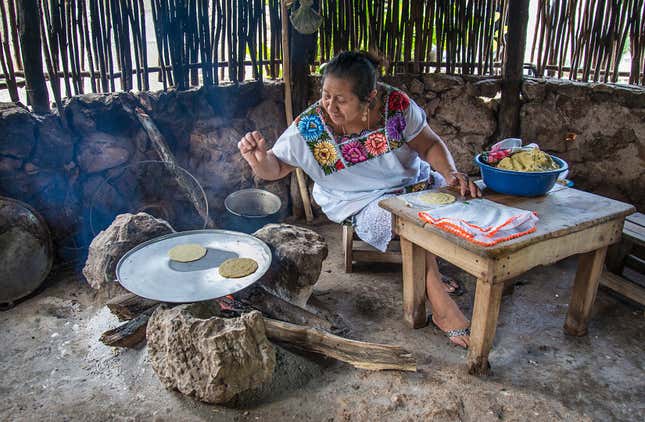
Roberto Cortez Viliegas, a 64-year old campesino from the town of Totontepec in the Sierra Mixe region of Oaxaca, said he has struggled with dwindling rainfall.
“A period of drought in August never used to last longer than two days,” he said “This year, in August, we had 10 days in a row without a drop of rain.” He said that farming rain-fed crops is so precarious that many campesinos have sought other sources of income.
“Today, a campesino also has to do other jobs to feed his family,” Cortez Viliegas said, adding that he sometimes works as a butcher. Others may find work in construction or road repair or, occasionally, as musicians. For many, however, the best option is to emigrate.
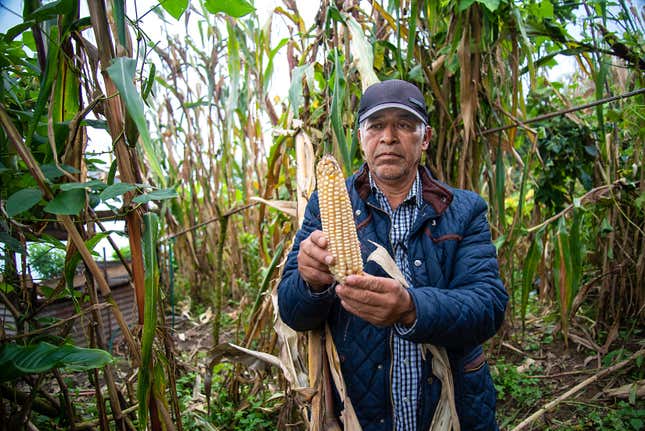
The decline of maize is driving would-be farmers to move to bigger cities or to the United States
Since indigenous Mexicans first domesticated maize some 9,000 years ago, farmers have replanted their best seeds year after year to develop a hardier, more nutritious crop. Those crops, and the knowledge of how to grow them, was passed on from generation to generation.
But changing conditions now threaten to sever that long, unbroken chain.
Declining production has driven young, would-be growers, including Cortez Viliegas’ two adult sons, to move to the United States, a trend that is set to accelerate as rising temperatures wreak havoc on Mexican farms. As a consequence, the population of campesinos is graying rapidly. It’s not uncommon to see mostly elderly men and women work the fields.
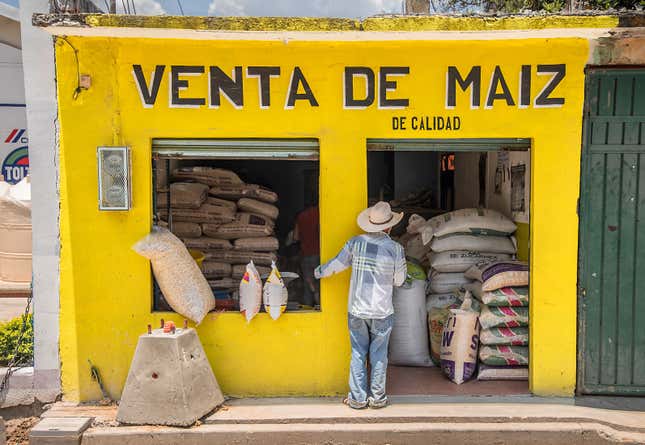
“In the Sierra de Juárez it is hard to find a farmer younger than 50,” said Gonzalez Rojas. He blames this on lack of support from the government as well as changing attitudes. “The teachers at school tell the children in rural areas not to become poor campesinos like their parents,” he said.
Gonzalez Rojas fears that if small farmers stop growing native varieties of maize on communal lands, the indigenous communities of Oaxaca will disintegrate. For centuries, the economic, cultural, and religious life centered around the cultivation of maize.
To preserve these communities, Mexico will not only need to tackle climate change. It must also reevaluate decades of economic policy, Gonzalez Rojas said.
“To keep young people on the farms, we have to fight 30 years of the government’s neoliberal policies designed to diminish the rural population,” he said. A 2018 study found that such policies—like Mexico abandoning subsidies for small farmers after signing NAFTA in 1992—have thus far done more than climate change to hurt maize farming.
As struggling farmers lay down their tools, some native maize varieties are beginning to disappear from fields. The decline of maize isn’t just bad for campesinos, but for agriculture more broadly.
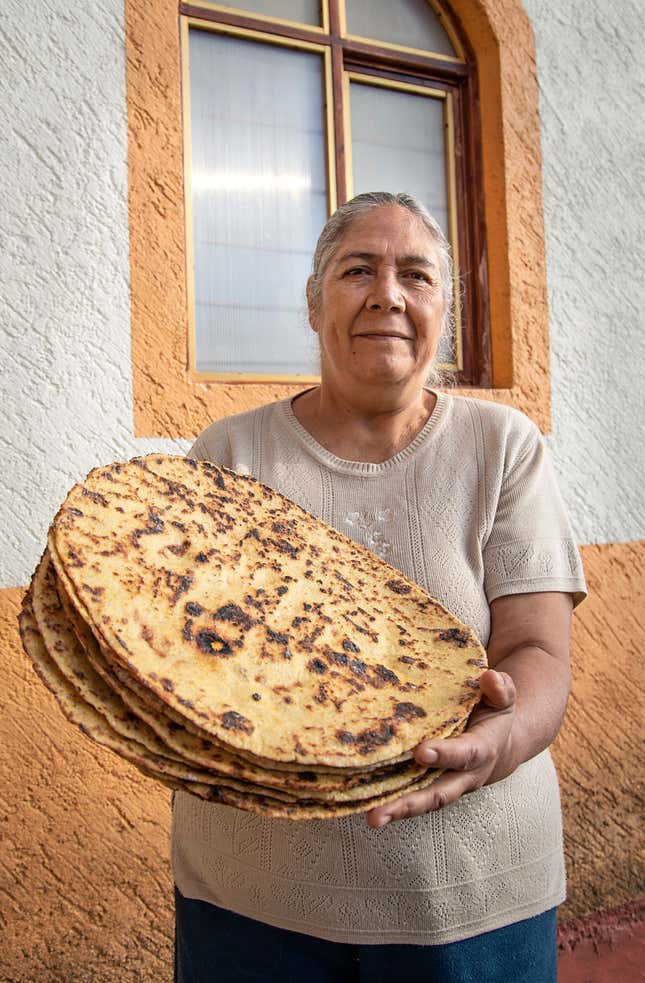
Native varieties of maize could hold the key to using less synthetic fertilizer
Over centuries, indigenous growers bred some 59 different native varieties of maize, or “landraces,” according to CIMMYT, the International Maize and Wheat Improvement Center, which preserves the seeds of some 48,000 maize varieties from all over the world at a seed bank in the town of Texcoco near Mexico City. Unlike commercial varieties sold by companies like Monsanto, landraces are highly adapted to the soil and climate of the communities where they are grown.
“Farmers keep selecting seeds from plants that do survive in extreme conditions to plant them in the following year,” said Martha Willcox, a geneticist at CIMMYT.
The dozens of different landraces could prove extremely valuable to farmers. Different varieties of maize are able to grow in harsh weather conditions, and some could hold the key to using fewer chemicals in farming.
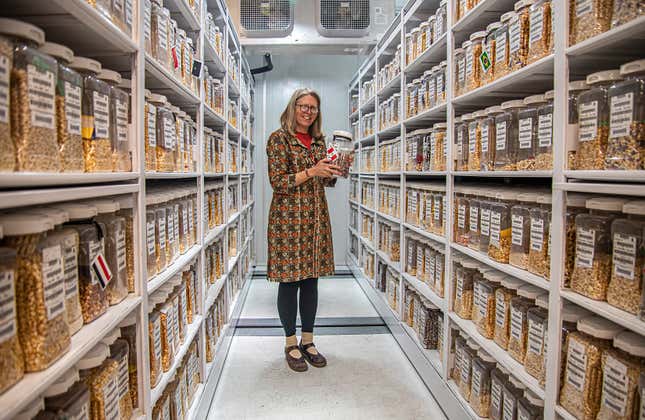
Nitrogen-based fertilizers are key to agriculture, but they are also major contributors to climate change and a significant source of water pollution. Nitrogen-rich run-off from farms doused with synthetic fertilizer can make its way to rivers and estuaries, creating dead zones. For this reason, scientists have long sought more sustainable ways to nourish crops.
In 2018 scientists at the University of California at Davis, the University of Wisconsin, and Mars Inc. demonstrated that the Sierra Mixe maize of Totontepec has the ability to grab up to 80% of the nitrogen it needs directly from the air, thanks to bacteria and enzymes that flourish in a gel produced by finger-sized roots that grow above ground. If scientists could breed this nitrogen-fixing trait into a commercial maize variety, they discovered, farmers would need a lot less chemical fertilizer.
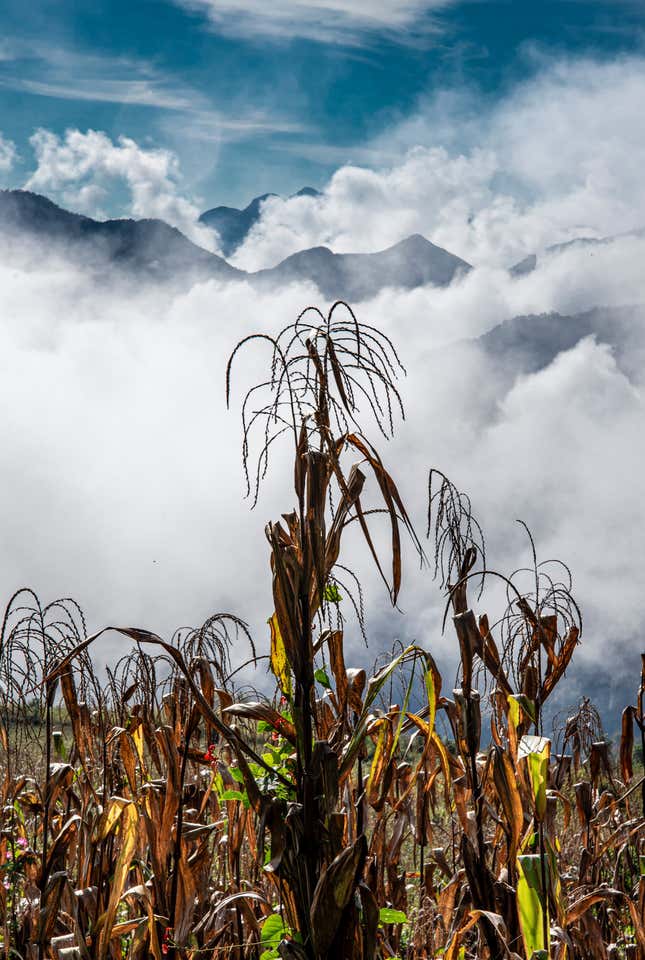
These efforts are not without controversy, however. Even though researchers paid the community of Totontepec farmers money for the use of their native maize, they may patent any nitrogen-fixing seed they eventually produce. And Aldo Gonzalez Rojas doesn’t want anybody, farmers or multinational companies, to hold patents on maize varieties.
“The seeds of the native maize have always been freely transferred from generation to generation and from community to community” he said. “It should stay out of the control of big companies.”
If campesinos can’t find salvation by doing business with food giants, they may nevertheless grab hold of a lifeline by working with smaller businesses—namely, restaurants.
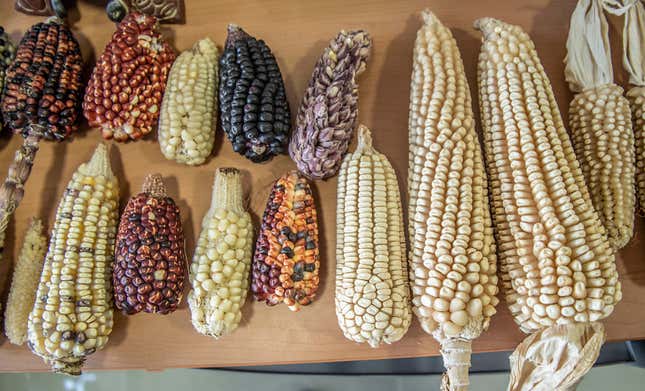
High-end restaurants offer a small market for native maize
To help keep the native varieties thriving in the their native habitats, Willcox is currently working with some of the poorest communities in Oaxaca to create high-end markets for some of their best native maize. “There are chefs in Mexico and abroad that are looking for special varieties to put on the table in their restaurants,” she said.
As Cortez Viliegas put it, “It makes the most delicious tortillas in the world.”
For example, Itanoni, a restaurant in the city of Oaxaca, has been serving traditional dishes prepared with native varieties of maize since it opened in 2001, catering to both locals and tourists. Meanwhile, in New York City, the popular Mexican restaurant Cosme has been willing to pay a good price for a native maize that could produce better tasting tortillas than the commercial varieties.
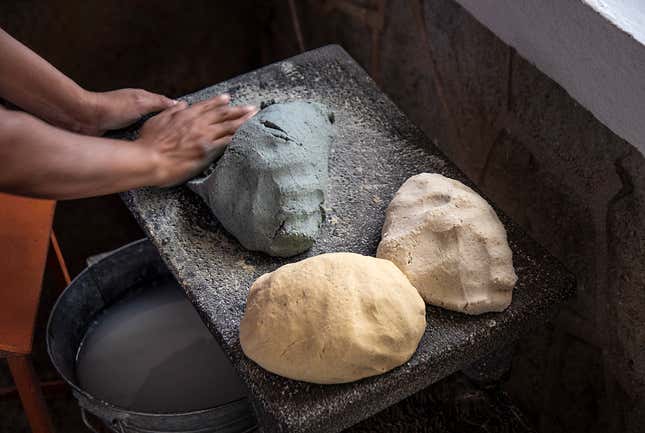
“There are varieties of maize that you’ll only find in one or two villages, and those varieties tend to be the very things that various top chefs want,” Willcox said. “I went from farm to farm to find a maize they liked,” she said.
Together with other Mexican maize experts, Willcox has created a collective trademark, MILPAIZ. This will guarantee buyers that the maize they purchase is a genuine native maize, grown at its place of origin by farmers who have plots smaller than ten hectares.
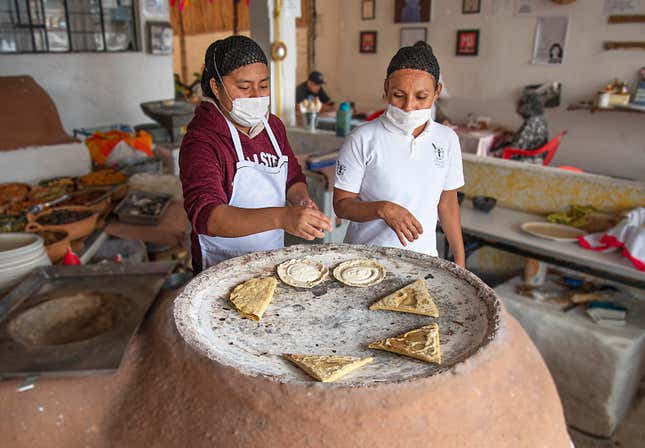
Willcox stressed the trademark is meant to exclusively offer economic benefits to small farmers, who, as guardians of this maize, should also be regarded as the intellectual property owners. She hopes more Mexican farmers can profit from the growing popularity of native maize.
“Right now, those farmers grow it just for their own family, and sell their surplus often at a loss to be able to pay for schools and doctor bills,” she said. “With the trademark we put a box around those farmers and say, this is the real thing, so they’ll be able to achieve a much better price.”
This post originally appeared on Nexus Media.
Teake Zuidema is a Dutch/American journalist and photographer living in Pittsburgh, PA. Nexus Media is a syndicated newswire covering climate, energy, policy, art and culture.
